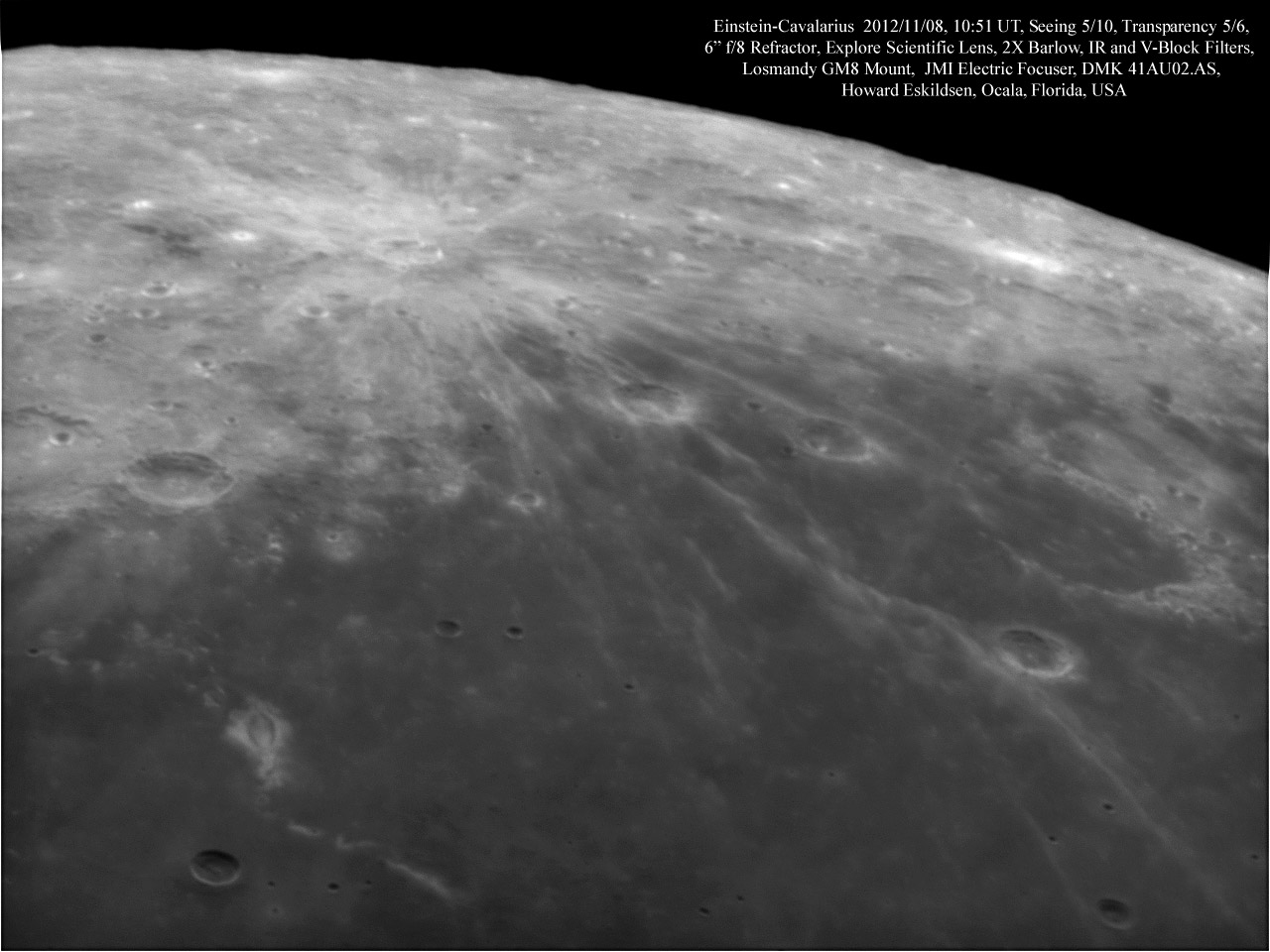Difference between revisions of "November 15, 2012"
| Line 2: | Line 2: | ||
=Naughty Rays= | =Naughty Rays= | ||
| − | + | <!-- ws:start:WikiTextHeadingRule:0:<h1> --> | |
| − | + | <!-- ws:start:WikiTextLocalImageRule:6:<img src="http://lpod.wikispaces.com/file/view/LPOD-Nov15-12.jpg/382578574/LPOD-Nov15-12.jpg" alt="" title="" /> -->[[File:LPOD-Nov15-12.jpg|LPOD-Nov15-12.jpg]]<!-- ws:end:WikiTextLocalImageRule:6 --><br /> | |
<em>image by [mailto:howardeskildsen@msn.com Howard Eskildsen], Ocala, Florida</em><br /> | <em>image by [mailto:howardeskildsen@msn.com Howard Eskildsen], Ocala, Florida</em><br /> | ||
<br /> | <br /> | ||
| Line 21: | Line 21: | ||
<br /> | <br /> | ||
<hr /> | <hr /> | ||
| − | |||
| − | |||
| − | |||
| − | |||
Revision as of 00:38, 3 January 2015
Naughty Rays

image by Howard Eskildsen, Ocala, Florida
If ever a lettered crater deserved a name it was Olbers A, the magnificent 43 km wide rayed crater known since 1993 as Glushko.
Rays from Glushko extend toward the farside and across Oceanus Procellarum. Especially famous is the ray that curves between
Cardanus and Seleucus. Rather than bemoan our failure to understand the exact ejection mechanics that produced the odd ray
we should just accept it, just as we do tangential rays, and marvel at the amazing complexity of impact cratering. A high Sun,
overhead view - courtesy of Clementine, reveals that Glushko was formed by a low angle oblique impact for there are few rays to
the NNW or SSE. Just looking at the ray distribution it is hard to determine which direction the projectile came from, but radar
reveals splashes of impact melt to the NNW, suggesting that the projectile came from the opposite direction and transferred its
momentum to the melt.
Chuck Wood
Related Links
Rükl plate 28



